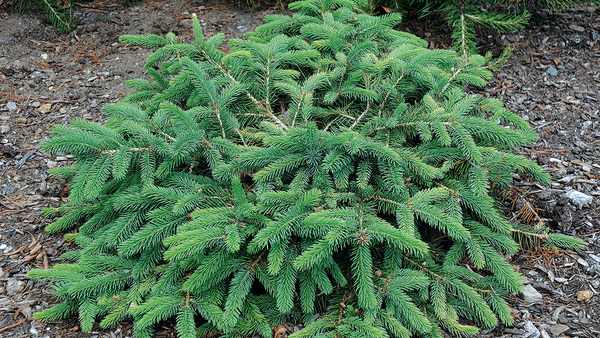
Who doesn’t love buying the flashy new plant that catches everyone’s eye at the nursery? Or the plant that’s just outside your hardiness zone, but has always taunted you with fantastic foliage and/or out-of-this-world flowers? Gardeners aren’t ones to always play it safe, but as Richie Steffen mentions in his article on tough perennials, “Planning a garden with unproven plants is risky business and not for those unwilling to take another hit to their wallet.”
And that’s where tough-as-nails, proven performers come in. Taking a gamble on a new plant is a little less risky when they’re paired up with a cast of characters that never disappoint. In Richie’s article, Tough-as-Nails Perennials, he covers the perennial plants that power through a variety of beastly conditions, but there are also countless shrubs that also play this crucial role. Below you will find some tough-as-nails shrubs for the Midwest.
1. ‘Sem’ False Spirea

Name: Sorbaria sorbifolia ‘Sem’
USDA Hardiness Zones: 2 to 8
Size: 4 feet tall and 5 feet wide
Conditions: Full sun to partial shade; tolerates a wide range of soils, moist to dry
‘Sem’ is a Dutch-born hybrid of two unnamed selections of false spirea, an otherwise sleeper shrub that seldom appears on most gardeners’ radars. This modern cultivar boasts salon-quality bronze and copper highlights as it unfurls its feathery fine leaves in early spring, growing into a stunning colony over time. As a hedge, it’s a shiner, but it’s just as effective weaving among perennials and other shrubs with combs of white flowers appearing in midsummer. Overall, false spirea is undownable, thriving in a variety of soils and weathering winters as cold as Zone 2.
2. ‘Wavecrest’ Viburnum

Name: Viburnum sieboldii ‘Wavecrest’
Zones: 4 to 8
Size: 15 feet tall and 12 feet wide
Conditions: Full sun to partial shade; well-drained soil
‘Wavecrest’ is a rare selection of V. sieboldii selected and named by Iowa viburnum guru Dr. Eugene Coffman for the former Wavecrest Nursery in Michigan. Favored by collectors and arboretum collections across the upper Midwest, this handsome shrub has earned a reputation for its arborescent habit (though it can be grown as a multistemmed specimen), early-summer flowers, red fruits, and, most notably, its brick red spring and fall color, an anomaly for the species. Its faster-than-average growth rate ensures that ‘Wavecrest’ matures into a structural specimen within four to five years, beating drought and tough winters along the way.
3. Cutleaf Stephanandra

Name: Stephanandra incisa ‘Crispa’
Zones: 3 to 7
Size: 2 feet tall and 4 feet wide
Conditions: Full sun; well-drained to dry soils
As deciduous, ground-covering shrubs go, cutleaf stephanandra is about as tough as they come. Perfect for slopes, this arching shrub sports miniature, maplelike leaves that age from bright green to citrus tones in autumn. While small clusters of white flowers appear in late spring, they don’t warrant as much press as the physical architecture of 4-foot-long stems ambling in sinuous lines along an embankment or wall. These same stems have four seasons of value—in winter, absent leaves, their cocoa-colored bark gives winter-weary eyes a little something to savor.
4. ‘Issai’ Beautyberry

Name: Callicarpa dichotoma ‘Issai’
Zones: 5 to 8
Size: 3 to 4 feet tall and wide
Conditions: Full sun to partial shade; well-drained soil
It’s not hard for beautyberries to capture the imaginations of gardeners, given their namesake fruit display in fall. Northern gardeners are wise to be choosy—many species aren’t reliably hardy and those that are often grow best as dieback shrubs. ‘Issai’ takes best-in-class within the hardy clan, reliably wintering Zone 5 minimum temperatures, while often regenerating from the previous season’s growth. Among cultivars of Japanese beautyberry, it is notably compact while offering generous fruit displays at an early age—raspberry-colored beads that persist into early winter.
Kelly D. Norris is the horticulture manager at the Greater Des Moines Botanical Garden in Des Moines, Iowa.

















Comments
Log in or create an account to post a comment.
Sign up Log in